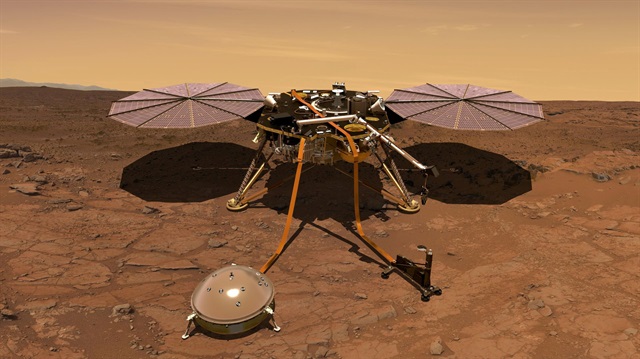
Martian time machine
While Earth's tectonics and other forces have erased most evidence of its early history, much of Mars - about one-third the size of Earth - is believed to have remained relatively static for more than 3 billion years, creating a geologic time machine for scientists.
InSight's primary instrument is a French-built seismometer, a device designed to detect the slightest ground motion from "marsquakes," even those on the opposite side of the planet. The instrument is so sensitive, Banerdt said, that it can measure a seismic wave just one-half the radius of a hydrogen atom.
Scientists expect to see a dozen to 100 marsquakes over the course of the mission, producing data that will help them deduce the depth, density and composition of the planet's core, the rocky mantle surrounding it and the outermost layer, the crust.
InSight is not the first attempt to measure Martian seismic activity. The Viking probes of the mid-1970s were equipped with seismometers, too, but they were bolted to the top of the landers, which swayed in Martian winds on legs built with shock absorbers.
Banerdt called those "handicapped experiments," joking, "We didn't do seismology on Mars - we did it 3 feet above Mars."
Apollo missions to the moon brought seismometers to the lunar surface as well, detecting thousands of moonquakes and meteorite impacts. But InSight is expected to yield the first meaningful data on internal planetary tremors beyond Earth.
Insight also will be outfitted with a German-made drill designed to burrow as much as 16 feet (5 meters) underground, pulling behind it a cable encasing a thermal probe to measure heat flowing from inside the planet.
A third instrument is a special transmitter to beam radio signals back to Earth, tracking Mars' subtle rotational wobble at its north pole to reveal the size of the planet's core and possibly whether it remains molten.
Hitching a ride aboard the same rocket that launches InSight will be a pair of miniature satellites called CubeSats, which will fly to Mars on their own paths behind the lander in a first deep-space test of the technology.
The twin briefcase-sized objects, if they survive the journey, will ultimately soar past the red planet, offering NASA a new interplanetary satellite platform that carries a fraction of the weight, and cost, of larger traditional spacecraft.














